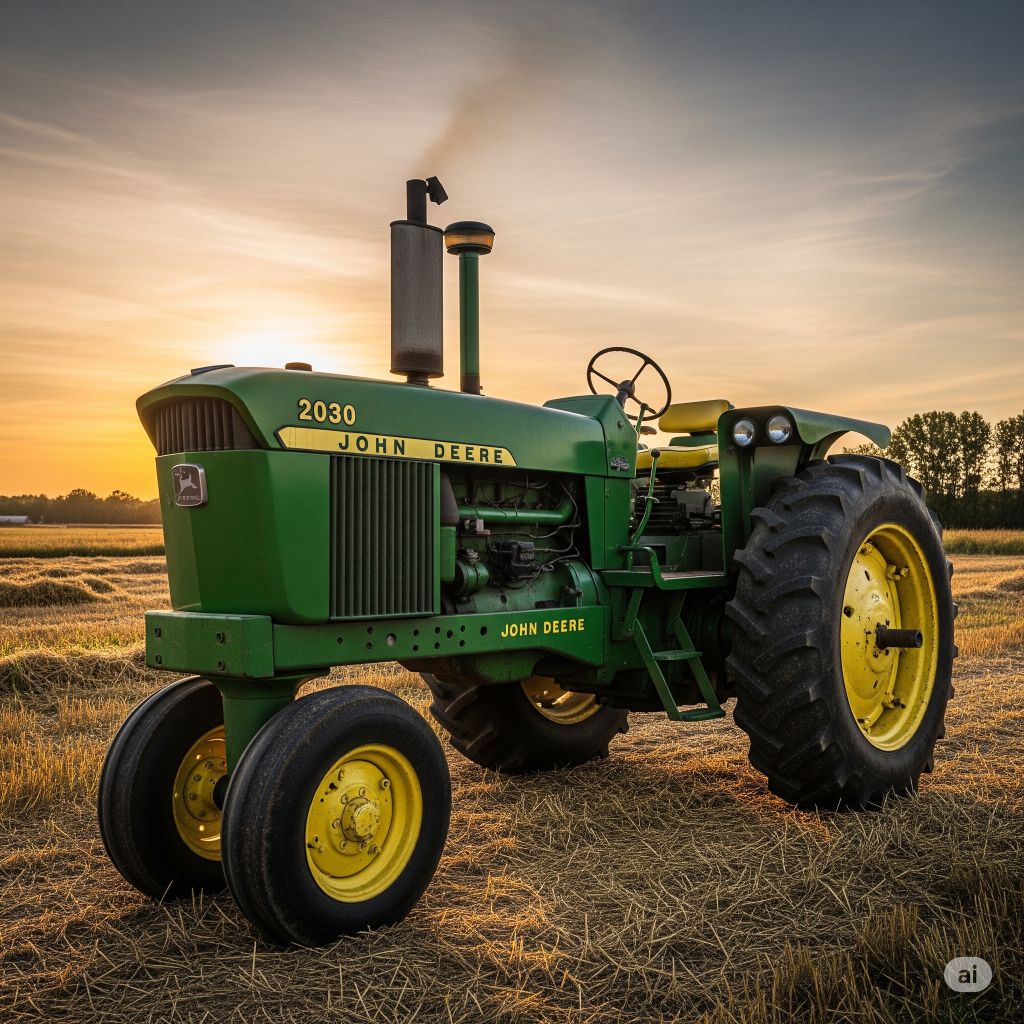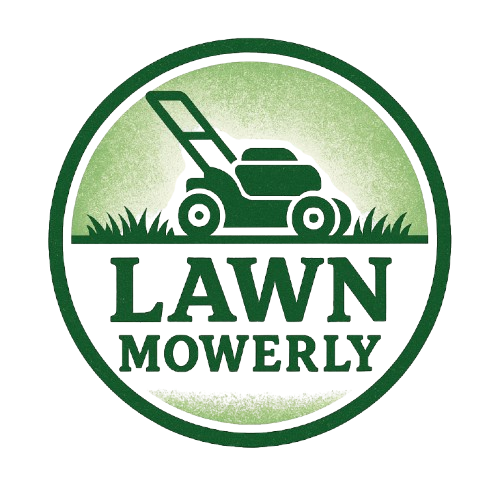
The John Deere 2030 is one of the most respected utility tractors from the 1970s and early 1980s. Built with rugged simplicity and dependable engineering, it has served farmers, landscapers, and ranchers worldwide. But despite its legacy, time and usage can take their toll. This guide dives into common John Deere 2030 problems, practical fixes, detailed specifications, and helpful maintenance tips so owners can keep these vintage workhorses running smoothly.
Common John Deere 2030 Problems and Fixes
1. Hard Starting – Especially Cold Starts
Symptoms:
- Cranks but won’t start in cold weather
- White smoke from exhaust
- Requires ether to fire up
Causes:
- Weak glow plugs or thermistor
- Low compression in older engines
- Thick, degraded engine oil in cold weather
- Faulty fuel delivery system
Fixes:
- Replace faulty glow plugs or install an inline block heater
- Use 10W-30 or 5W-30 oil in cold climates
- Add a fuel additive like Power Service to prevent gelling
- Rebuild injectors and test compression if symptoms persist
2. Hydraulic System Failures or Slow Response
Symptoms:
- Loader or 3-point hitch raises slowly or not at all
- Implements chatter or drop when idling
- Loss of steering assist (if equipped with hydrostatic steering)
Causes:
- Clogged hydraulic filter or screen
- Low hydraulic fluid
- Internal pump wear or broken shaft
- Leaky control valves or cylinders
Fixes:
- Clean or replace hydraulic filter and sump screen
- Fill fluid to correct level with JD Hy-Gard or J20C equivalent
- Pressure test pump—replace if below spec
- Rebuild or reseal worn hydraulic cylinders
3. Overheating Issues
Symptoms:
- Temperature gauge reads high after light use
- Coolant boiling or overflow
- Steam from under hood
Causes:
- Clogged radiator or fins
- Faulty water pump or thermostat
- Airlock in cooling system
- Broken fan belt
Fixes:
- Power wash radiator and clean fins
- Replace thermostat and flush the system
- Bleed air from cooling system
- Inspect and replace fan belt if loose or frayed
4. Electrical System Glitches
Symptoms:
- No crank or intermittent start
- Dash lights flicker or go out
- Battery drains quickly
Causes:
- Corroded or loose battery terminals
- Faulty starter solenoid or ignition switch
- Aging wiring harness with frayed wires
Fixes:
- Clean and tighten all electrical connections
- Replace ignition switch or solenoid
- Install a new wiring harness or splice bad wires
- Test alternator and replace voltage regulator if needed
5. PTO Won’t Engage or Disengage Properly
Symptoms:
- PTO won’t spin even when lever is engaged
- PTO stays spinning after lever is disengaged
- Grinding sound when trying to engage
Causes:
- Linkage out of adjustment
- Worn or sticking PTO clutch
- Damaged PTO shaft or gears
Fixes:
- Adjust linkage to proper factory spec
- Rebuild PTO clutch or inspect for seized components
- Replace worn gears or shaft after disassembly
6. Transmission or Gear Shifting Issues
Symptoms:
- Tractor jumps out of gear
- Hard to shift or stuck in gear
- Grinding noises from transmission
Causes:
- Worn shift forks or synchronizers
- Loose shifter linkage
- Contaminated or low transmission oil
Fixes:
- Drain and refill with fresh transmission oil
- Replace worn shift forks or rebuild gearbox
- Inspect and tighten linkage components
🛠️ John Deere 2030 Technical Specifications
| Category | Details |
|---|---|
| Model Years | 1971–1975 (U.S. production) |
| Engine Type | John Deere 4-cylinder diesel or gas engine |
| Displacement | 3.6L (219 cu in) diesel / 3.3L gas |
| Horsepower | 68 HP engine / ~60 HP PTO |
| Fuel Capacity | ~18 gallons (68 liters) |
| Transmission | 8-speed manual / optional Hi-Lo |
| PTO | Independent 540 RPM |
| Hydraulics | Closed-center system |
| Hydraulic Flow | Approx. 9–11 GPM |
| 3-Point Hitch | Category 2 (draft and position control) |
| Weight | 5,300 lbs (bare) – up to 6,500 lbs loaded |
| Tires | Front: 6.00-16 / Rear: 13.6-28 (common sizes) |
| Brakes | Wet disc brakes |
🧰 John Deere 2030 Maintenance Guide
Regular maintenance is critical for longevity. Here’s a quick-reference schedule:
| Task | Interval |
|---|---|
| Engine oil & filter | Every 100 hours |
| Fuel filter | Every 200 hours |
| Air filter (outer/inner) | Inspect every 100 hours |
| Hydraulic filter/screen | Every 400 hours or annually |
| Transmission fluid | Every 600 hours |
| Coolant flush | Every 2 years |
| Grease fittings | Every 10 hours of use |
| Battery terminals | Monthly |
📋 John Deere 2030 Pros and Cons
✅ Pros
- Rugged and reliable for over 40 years
- Easy to maintain with basic tools
- Excellent parts availability
- Capable of handling loader, mowing, and baling jobs
- Fuel-efficient 4-cylinder diesel
❌ Cons
- No cab in base models—hot and loud
- Hydraulics prone to wear if neglected
- Hard cold starting without heater
- Some parts (electrical components) no longer produced
- PTO clutch and linkage wear with heavy use
👨🔧 Real Owner Tips and Insights
- Cold Weather Tip: Install a block heater and fuel heater if you operate in sub-zero temperatures.
- Hydraulic Health: Replace old or milky fluid—contaminated hydraulic oil leads to valve and pump failure.
- Tire Swap Tip: Many owners upgrade to wider rear tires for improved traction and load stability.
- Add a ROPS: If yours lacks a Roll Over Protection Structure, retrofit one for safety, especially on hills.
❓ Frequently Asked Questions – John Deere 2030
Q1: What is the difference between the JD 2030 and 2040?
The 2040 replaced the 2030 with slight upgrades in hydraulic capacity, emissions, and engine efficiency. However, the layout and operation remain largely similar.
Q2: Can you install a front-end loader on the 2030?
Yes. Many 2030s are compatible with John Deere 145, 148, or 240 loaders. Ensure your front frame and hydraulic system can support the additional load.
Q3: What hydraulic oil should I use?
Use John Deere Hy-Gard or a compatible J20C universal tractor fluid. Avoid mixing brands or types.
Q4: How do I identify if my 2030 has a Hi-Lo transmission?
The Hi-Lo lever is usually on the dashboard or side console. If your tractor has 16 total speeds (8 high, 8 low), it’s a Hi-Lo model.
Q5: Where is the hydraulic filter located?
Most 2030s have a suction screen on the right-hand side under the axle housing. Some may also include a screw-on filter near the transmission housing.
📈 Parts Availability and Cost Overview
Although the John Deere 2030 is a vintage model, many aftermarket and OEM parts are still available, including:
- Fuel filters: $10–$20
- Hydraulic pumps: $300–$600 (OEM)
- Water pumps: $100–$200
- PTO clutch kits: $250–$450
- Radiators: $250–$500
- Rebuilt starter/alternator: $80–$200
Where to buy: John Deere dealers, Shoup, Steiner, All States Ag Parts, eBay, and aftermarket stores like A&I Products.
🧠 Final Thoughts
The John Deere 2030 remains a cherished utility tractor even decades after its original production ended. It’s durable, simple to maintain, and fully capable of handling modern workloads if properly cared for. While issues like hydraulic aging, electrical wear, and PTO quirks are common, they’re all manageable with a little patience and mechanical know-how.
Whether you’re restoring a classic, running a working farm, or just enjoying tractor life—investing in regular maintenance and timely repairs will keep your JD 2030 reliable for years to come.

I’m David man behind Lawn Mowerly; I’ve been dealing with lawnmowers and Tractors with my father since I was a kid. I know every make and model and what each one is capable of and love helping people find the perfect equipment for their needs.
